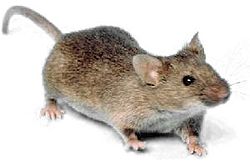Taxonomy
Most of the Murinae have been poorly studied. Some genera have been grouped, such as the hydromyine water rats, conilurine or pseudomyine Australian mice, or the phloeomyine Southeast Asian forms. It appears as if genera from Southeast Asian islands and Australia may be early offshoots compared to mainland forms. The vlei rats in the genera Otomys and Parotomys are often placed in a separate subfamily, Otomyinae, but have been shown to be closely related to African murines in spite of their uniqueness.
Three genera, Uranomys , Lophuromys , and Acomys , were once considered to be murines, but were found to be more closely related to gerbils through molecular phylogenetics. They have been assigned a new subfamily status, Deomyinae.
Molecular phylogenetic studies of Murinae include Lecompte, et al. (2008), which analyzes African murine species based on the mitochondrial cytochrome b gene and two nuclear gene fragments. Lecompte, et al. (2008) estimates that African murines colonized Africa from Asia approximately 11 million years ago during the Miocene.
The following phylogeny of 16 Murinae genera, based on molecular phylogenetic analysis of the Interphotoreceptor Retinoid Binding Protein (IRBP) gene, is from Jansa & Weksler (2004: 264).
List of species
As of 2005, the Murinae contained 129 genera in 584 species. Musser and Carleton (2005) divided the Murinae into 29 genus divisions. They treated the Otomyinae as a separate subfamily, but all molecular analyses conducted to date have supported their inclusion in the Murinae as relatives of African genera. [9] In a recent expedition in the Philippines, seven more Apomys mice were added and the genus was proposed to split into two subgenera - Apomys and Megapomys, based on morphological and cytochrome b DNA sequences. In 2021, a major revision was taken of Praomyini. [12]
The tribes are based on the classification by the American Society of Mammalogists. [13] Some of the division placement is based on Pages et al., 2015 and Rowe et al., 2019. [2] [14]
SUBFAMILY MURINAE - Old World rats and mice
This page is based on this
Wikipedia article Text is available under the
CC BY-SA 4.0 license; additional terms may apply.
Images, videos and audio are available under their respective licenses.
